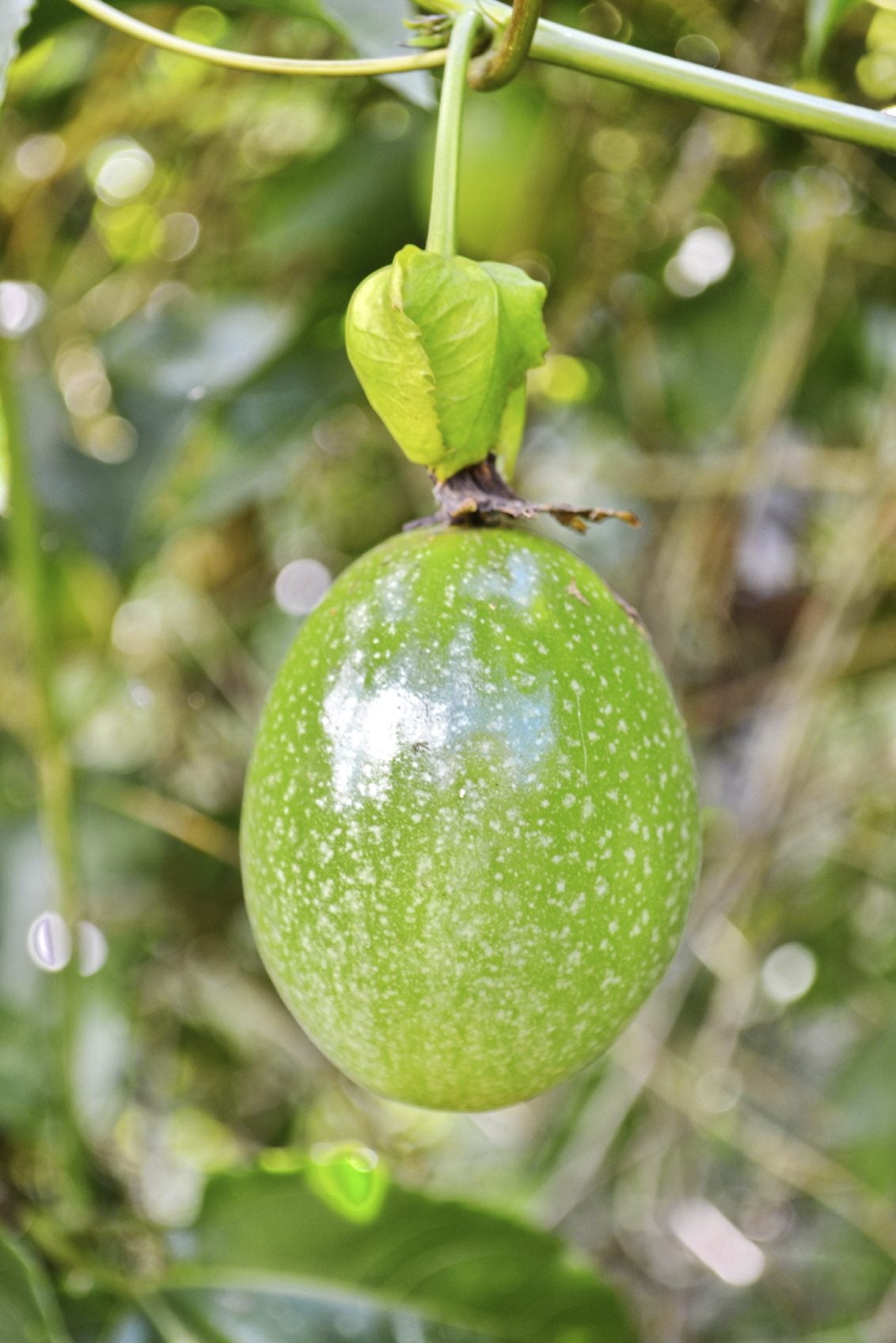Passion Fruit Harvest Time – When And How To Harvest Passion Fruit


When do you pick passion fruit? Interestingly, the fruit isn't harvested from the vine but is actually ready to eat when it falls off the plant. Fruits ripen at different times of the year in regard to planting zone. These facts make it difficult to know when to harvest passion fruit, especially in cooler regions.
Other things to consider are species and site. The two varieties of fruit each have different maturity times, with purple fruits ripening earlier than yellow fruits. The best test for ripeness and passion fruit harvest time is the taste test. Nibble your way to a successful harvest of sweet-tart fruit.
When Do You Pick Passion Fruit?
The passion fruit vine is a sub-tropical to tropical plant that cannot tolerate freezing temperatures. It is classed in two forms, the yellow and purple species. Each form has slight differences outside of the obvious color difference, with the purple fruiting vine a more hardy strain that can withstand temperate climates with some protection.
In cooler regions, fruits will ripen much later than those grown in long season, warm areas. The trick to knowing how to harvest passion fruit resides in experience and flavor preference. The purple passion fruit is native to Brazil and widely grown in tropical to sub-tropical areas. This vine seems to have a greater tolerance for cooler conditions and ripens later than its golden hued cousin.
The origin of the yellow form is unknown, but it is also called tropical passion fruit. Fruits usually start to appear on vines that are one to three years old with earlier fruit occurring in warmer regions. The yellow fruiting vine blooms April to November while the purple flowers in March through April.
Fruits can be expected to ripen 70 to 80 days after pollination. This means passion fruit harvest time is around the end of summer into fall for purple vines and may be through winter for the yellow form.
How to Harvest Passion Fruit
You will know it is time to harvest when fruits are plump, have a slight give, and are fully colored. In the yellow forms, the color is deeply golden and the purple fruits will be nearly black.
Gardening tips, videos, info and more delivered right to your inbox!
Sign up for the Gardening Know How newsletter today and receive a free copy of our e-book "How to Grow Delicious Tomatoes".
Slightly wrinkled fruits are super ripe and will have a sweeter taste than the smooth skinned passion fruit. The ripest fruits will simply drop off the vine, so keep the area under your plant clear to facilitate finding the fruit.
Fruits that are still on the vine and have changed from green to purple or yellow are also ripe and may be picked straight from the tree. Simply give attached fruit a gentle twist when picking passion fruit from the vine.
Green passion fruit won't ripen fully off the vine but ripe fruits will develop deeper, sweeter flavor if left uneaten for several days.
Storing Passion Fruit
After picking passion fruit, you can store them for a week or more in the refrigerator. When picking passion fruit, place them in boxes or crates where air can circulate. Don't use a bag, as the fruit can mold. Wash and dry the fruit and store in the crisper of the refrigerator or in mesh bags.
Commercial growers coat the fruit in paraffin to allow for easier shipping and keep fruit fresh for up to 30 days. If you want the fruit to ripen a bit more, leave it on the kitchen counter for a few days.
The taste will be sweeter and more balanced. Use passion fruit fresh, as a condiment, or cooked down to add to desserts. The rich flavor is also used in cocktails, as juice, and in delicious ice cream.

Bonnie Grant is a professional landscaper with a Certification in Urban Gardening. She has been gardening and writing for 15 years. A former professional chef, she has a passion for edible landscaping.
-
 Looking For Plants To Give You The Soft And Fuzzies? Try These 5 Fuzzy Leaf Plant Options
Looking For Plants To Give You The Soft And Fuzzies? Try These 5 Fuzzy Leaf Plant OptionsLovers of texture, drama, silver foliage and tactile plants will adore these special sensory garden additions. These fuzzy leaf plant options will leave you all aglow
By Susan Albert
-
 Get Ready For A Summer Of Hummers! Grow These Full Sun Hummingbird Plants and Flowers
Get Ready For A Summer Of Hummers! Grow These Full Sun Hummingbird Plants and FlowersIf you’re lucky enough to enjoy a sunny backyard, make sure you are maxing out on your pollinator opportunities and grow these full sun hummingbird plants and flowers
By Tonya Barnett